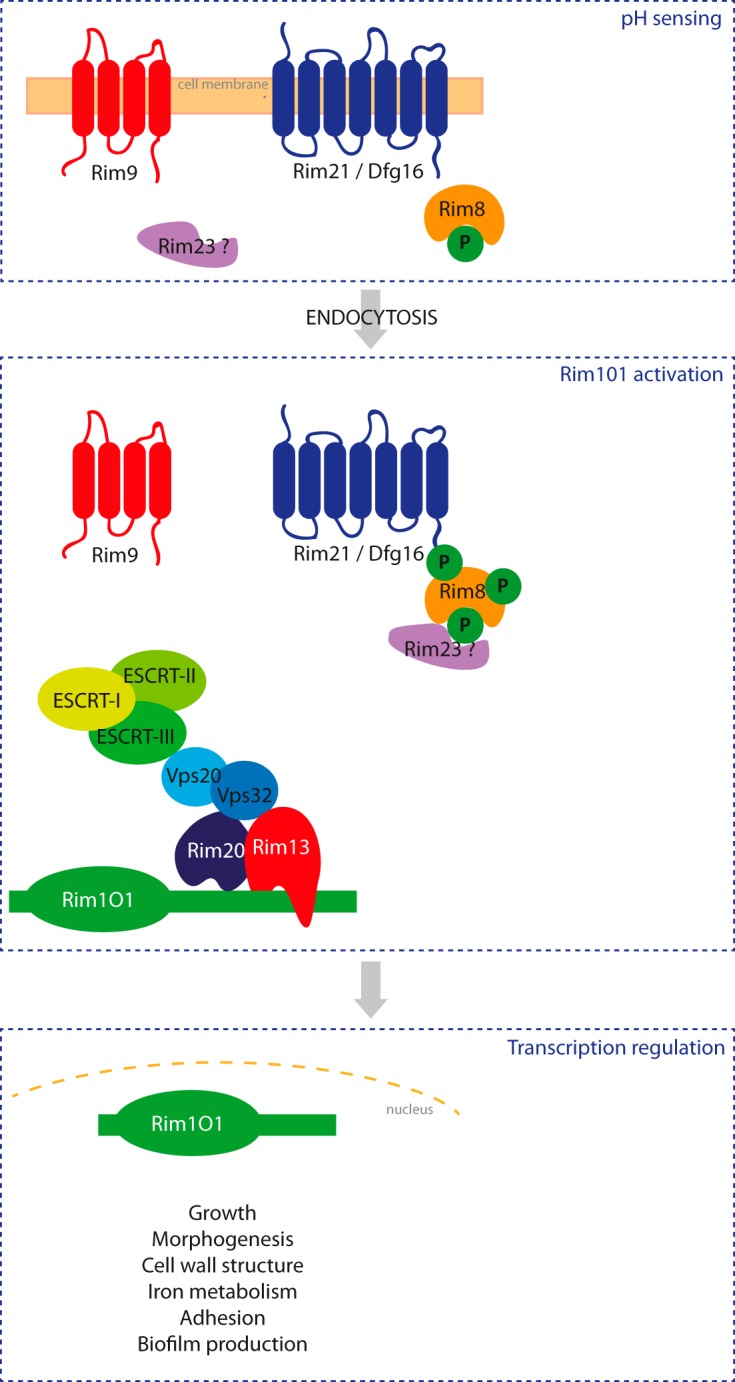FIG 1.

Schematic representation of the Rim pathway in C. albicans. External pH is sensed by a complex of 2 transmembrane proteins, Rim9 and Rim21/Dfg16, and the arrestin-like protein Rim8. Under neutral-alkaline conditions, Rim8 is hyperphosphorylated, leading to endocytosis of this membrane complex and recruitment of the endosomal sorting complexes required for transport (ESCRT) I, II, and III. Two other Rim proteins, Rim20 and the signaling protease Rim13, are then recruited (via Rim8 or an orthologue of S. cerevisiae Rim23, which has not yet been identified in C. albicans), leading to cleavage of the C-terminal inhibitory domain of Rim101, the final transcription factor of the Rim pathway. Once activated, Rim101p migrates to the nucleus and regulates the expression of target genes involved in multiple cellular processes, including growth, iron metabolism, cell wall structure, yeast-to-hypha transition, adhesion, and biofilm formation.
